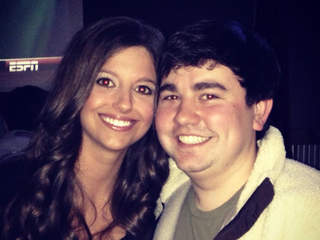I first heard about the dreadful boating accident on Oklahoma’s Grand Lake from my grandson, Nick. He was driving me to pick up my car at the Honda garage and had just heard about it from a college friend on his I-phone.
The message was that two of his classmates at the University of Arkansas had been killed that afternoon and that drugs and alcohol had been involved.
The facts that began to emerge were that John DeSelms, also a University of Arkansas student, had driven a 22-foot Cobalt ski boat at high speed into a docked, unoccupied houseboat at Grand Lake. The impact killed Rachel Swetnam and William Lewis “Trey” Varner III. They were both 21 years old.
DeSelms, it was reported, had been drinking and taking drugs. He told investigators that he had consumed about 10 beers, one shot of tequila and an anti-depressant that was not prescribed to him. He also admitted to using marijuana two days earlier. The charges against him could include first degree manslaughter.
Emergency 911 calls late in the afternoon of May 14 provide additional details of the tragedy.
Caller: “There are eight people. Gosh, there’s blood everywhere. People are sitting on the dock. Two of them are lying on the dock. Blood everywhere. Two on the dock are alive.”
2nd Caller: “We got a major accident at Arrowhead. Major, major wreck, okay?”
911: “Okay, injuries?”
Caller: “Yeah, big time.”
3rd Caller: “People are hurt, possibly two fatalities. A boat ran into, its inside the other boat, the whole boat is inside the other boat.”
4th Caller: “A boat just ran into the dock 40-50 miles per hour. There were about six people in it.”
A week after the accident there was a memorial service for Rachel and Trey at the Union Verizon Ballroom on the UA campus and then they were laid to rest. Rachel would have been a senior and Trey a junior.
So there you have it. Two college kids, dead because of head injuries, a third, the driver of the boat, who will have to live with the burden of their deaths, and five other student passengers who will have to deal with the nightmare along with the grieving parents and friends of the family.
So what can we do about alcohol and other drugs killing our children?
In recent years, Steve Straessle, principal at Catholic High in Little Rock, has given me valuable insights into the teenage mind and some answers. Here is an example:
“I’ve spent the last thirteen years of my life trying to tap into the teenage mind. I feel like a miner constantly picking away at gray matter and rejoicing when I find pieces that hold unspeakable value, dusting off those pieces that might hold promise, and chucking those pieces that have had all the precious minerals torn and wasted by unseen hands.
“I speak often with my counterpart at Little Rock Central High School, Nancy Rousseau. We compare notes, trade stories, and try to inspire each other to carry on in the face of adversity.
“We both worry because we’re convinced there must be a way to address the root of problems that tend to wrap themselves like boa constrictors and begin a slow, tight squeeze around our children. How can we help parents and their kids? How can we rattle cages without sounding like alarmists? How can we prevent another untimely, soul-bending visit to a funeral home?
“Unfortunately, we know what we’re up against. You see, drugs and alcohol are waiting for your children. Like predators, drugs and alcohol wait until your son or daughter feels depressed. They wait for your son to get angry and your daughter to desire popularity. They wait for the perfect scenario to spring upon your young ones and offer them a moment of feeling good, of belonging, of leaving reality for a few moments.
“The mother of all weapons in fighting drugs and alcohol is just that…a mother and a father. A teacher, a counselor, or a principal. A trusted friend.
“The resiliency of the drug culture with younger kids is baffling. The pervasive use of alcohol by teens is mystifying. Nancy and I worry because we have yet to find the words to appropriately articulate just what seems to happen again and again to many of our city’s youth.
“We have yet to find the perfect parent (and God knows we’re far from it ourselves) but we have learned a thing or two from some exceptional individuals who have taught us to embark upon creating a culture of respect for one’s body as opposed to a culture of destruction of one’s persona.
“We’ve both seen death in our time as educators. We’ve seen beautiful girls carried to graves by handsome young men. We’ve seen star athletes leave the playing field for the last time. We’ve seen the popular kids, the outsiders, the inner city kids, the suburban kids, the academics, and the apathetic brought low by all too early visits with tragedy. We’ve both seen how life extinguished can affect an entire student body.
“And then, we think again. Sometimes even more profound than death in the physical sense is death in the emotional sense. We’ve seen boys and girls who ingest substances in the hope of altering their personalities or their mental states or their social status. And we wonder where it’s all going.
“We’ve asked each other aloud, “Do their parents know what’s going on? Do they have a clue as to what we see and hear? Surely they must not; otherwise, they would have moved heaven and earth to protect their most prized endeavor, their offspring.”
“Most of the teenagers we come across are wonderful and well adjusted. However, some are suffering from self-inflicted flaws that are manifested by alcohol and drug use. No school’s student body is above reproach. We have seen the smallest private school, the diverse urban school, and the most rural public school affected by drug use within its ranks, and what is most disturbing is the inability of parents, the inability of schools, the inability of the community to address the snowball as it heads downhill.
“We don’t have all the answers in dealing with this deep cultural flaw that is inflicted upon our kids time and again. However, we do have some hints that will undoubtedly help.
“Drug and alcohol use are symptoms of a larger social problem, a problem that is glorified by those who claim that knowledge, entertainment, and belonging can only be derived from the bottom of a bottle or the tip of a joint.
“Self-image is so important to high school kids. Belonging is more than a psychological cliché for some of them; it is a mantra that permeates everything they do. Speak to your children about the confidence that comes from doing right.
“Let them know that souls are damaged by dropping to the lowest common denominator. And most of all, tell them you are most proud of them when they make a stand in a crowd. Because that’s true belonging. Belonging to one’s self.
Speak with city leaders about your desire for a community effort to come to terms with teenage drinking and drug use. Fight the impulse to wink at destructive behavior and the impulse to shrug it off with “kids will be kids.” And remember, where your child is concerned, nothing is unforgivable.”
For those seeking more information about how to minimize the threat of alcohol and drugs, I recommend Joseph A. Califano Jr.’s book “How to Raise a Drug Free kid. The straight Dope for Parents.” Here are eight strategies from the book.
1. Be there: Get involved in your children’s lives and activities.
2. Set a good example: Actions are more persuasive than words.
3. Set rules and expect your children to follow them.
4. Monitor your children’s whereabouts.
5. Maintain family rituals, such as eating dinner together.
6. Incorporate religious and spiritual practices into family life.
7. Get Dad engaged—and keep him engaged.
8. Engage the larger family of your children’s friends, teachers, classmates, neighbors, and the community.





Speak Your Mind